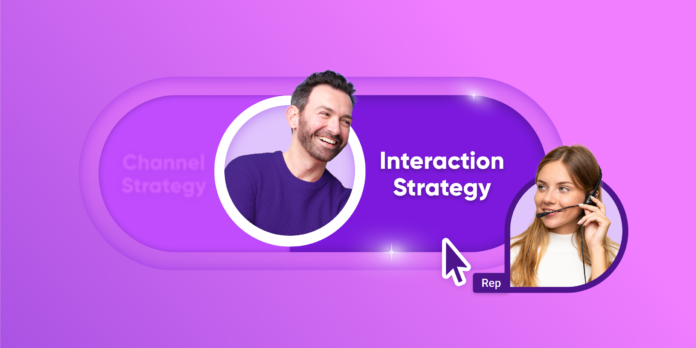Virtually every company that interacts with customers has been operating over the past few years with what’s been called a “channel strategy.” Until recently, a channel-focused strategy was the only strategy a company could operate under, since digital technology and capabilities each evolved separately. But now, with the emergence of Unified Interaction Management (UIM) there is an alternative–one that is much better for both companies AND customers.
Channel Strategy
Question: How can we manage each of the various channels customers use to contact us—including phone, digital, chat, email, social media, etc.?
Most companies first developed their service model based around a nucleus of telephony, because just about all non-brick and mortar interactions were conducted by phone. However, as newer technologies emerged, and as customer preference for digital interactions increased, most companies then began expanding their call centers into “contact centers.”
That meant staffing different teams of people managing each of the new channels–all of which were piled on top of the volume of incoming telephone calls–hence, a channel strategy.
However, this is now another alternative: One that’s more evolved, one that gives companies a chance to keep up with, or even stay ahead of digital transformation at competitive organizations. With the advent of ChannelLess™ architecture, it is now possible to operate with an “interaction strategy.”
Interaction Strategy
Question: How can we create the best interaction (most efficient, most effective, best experience) for each customer, regardless of which channel they use and which channel they move to during the interaction?
The demand to “meet the customer where they are” has traditionally meant, “to meet them in the channel they chose.” But here’s the thing: All too often, a customer chooses a channel that isn’t the best fit for their exact need. And who can blame them? How would they know?
Here are four of the most common examples of bad interactions that are likely happening hour after hour, day after day with your customers:
- The % of customers who start in digital, but end up having to abandon their digital journey and start again on the phone, creating a high-effort experience.
- The % of customers who call on the phone, but didn’t need to because they could have easily resolved their specific issue without live assistance–resulting in a waste of resources and customer effort.
- The % of customers who interact with a bot that can’t handle their specific issue or need, leading to friction and failure.
- The % of customers who initiate a chat session for an issue or need that can’t be fully resolved in chat, which creates unnecessary customer effort and frustration.
By adopting a Unified Interaction Management (UIM) model–where all elements of the contact center, digital customer service and AI/automation are all unified within a single ChannelLess™ platform–each of the above percentages can be quickly driven down to a level of “practical zero.” In UIM, it doesn’t matter which channel a customer chooses to contact your company, they can be seamlessly transitioned to the “best-fit” interaction type. For some issues, that means virtual assistance. In other cases, live assistance–sometimes through messaging and sometimes through OnScreen Voice interactions. The trick is to match the right interaction type to a customer’s specific need at that moment.
Bottom line: Until recently, your company had no choice but to operate with a channel-driven strategy. That was the only choice, but evolving to an interaction strategy is now within your grasp. The channel is not the issue, the customer’s issue is the issue. The only thing that matters to each customer who is contacting you, is the interaction they are having right now.
And now…there’s a strategy that can greatly increase the measurable value of getting interactions “right.”
You can’t be blamed for operating with a channel strategy in the past. There was no other alternative. But now there is–an interaction strategy–and it is your responsibility as a leader to understand the differences, and move your organization in the right direction.
Read more in this blog series about how Glia is moving beyond CCaaS with Unified Interaction Management.





